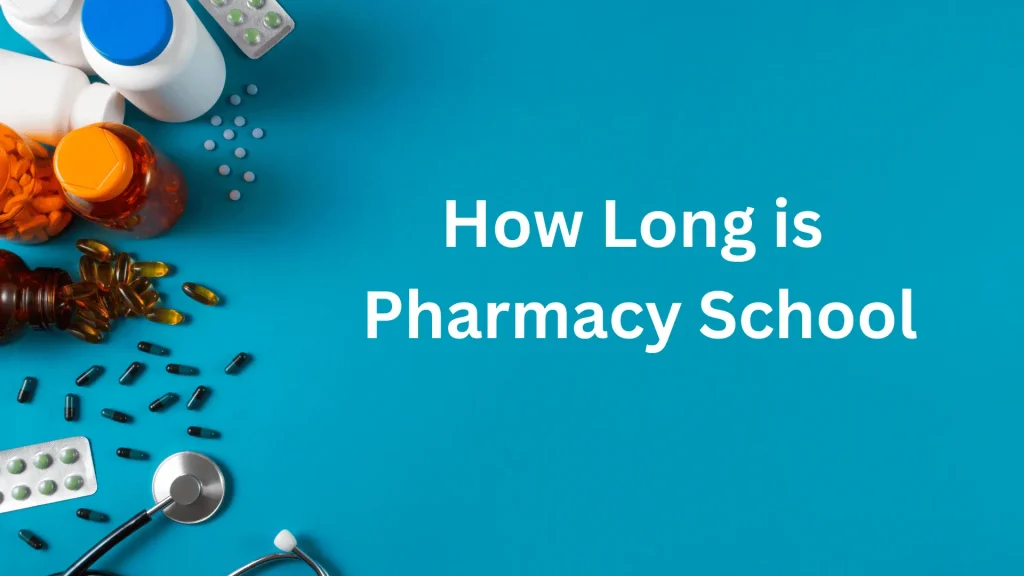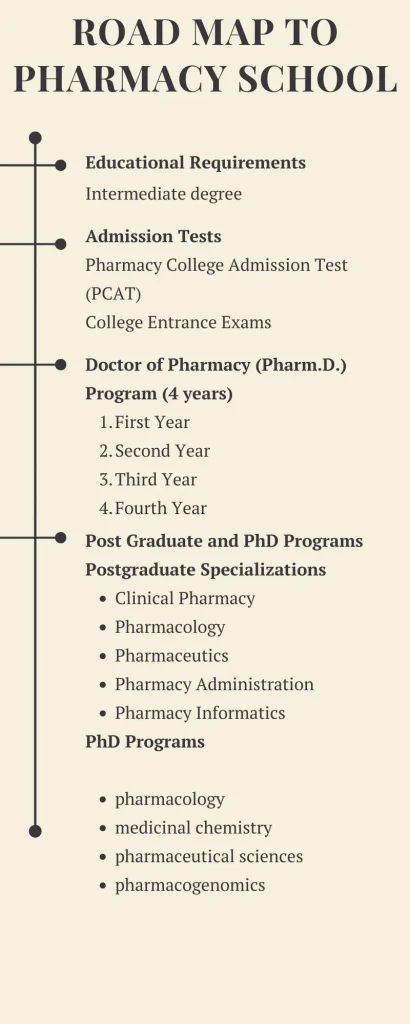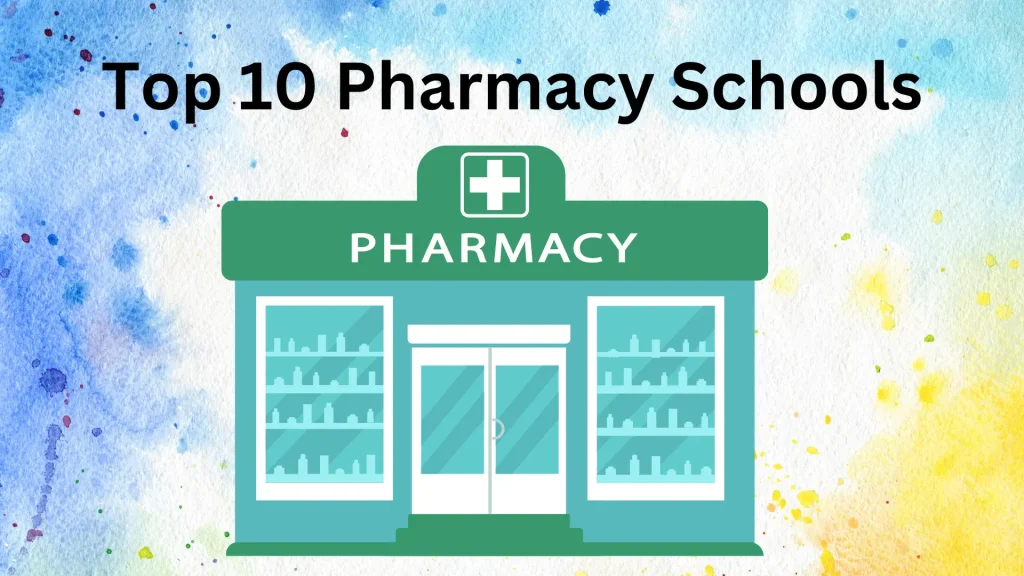Pharmacy is a vital field in healthcare, ensuring patients receive the correct medications and understand their usage. If you’re considering a career in this field, a common question might be, “How long is pharmacy school?” This comprehensive guide will help you understand the duration, structure, and requirements of pharmacy education, so you can make an informed decision about your future.
What is Pharmacy School?
Pharmacy school is a specialized educational program designed to prepare students for a career as pharmacists. These programs combine rigorous coursework in subjects like chemistry, biology, and pharmacology with practical training in various healthcare settings. The goal is to equip students with the knowledge and skills needed to safely dispense medications and counsel patients.

In pharmacy school, students learn about drug interactions, medication therapy management, and the ethical and legal aspects of pharmacy practice. They also gain hands-on experience through internships and clinical rotations, which are essential for developing practical skills and understanding real-world applications of their studies.
How Long is Pharmacy School?
The length of pharmacy school varies depending on the country and the specific program. In the United States, the journey to becoming a pharmacist typically involves several stages of education and training:
Undergraduate Education (2-4 years)
Before entering a Doctor of Pharmacy (Pharm.D.) program, students must complete prerequisite coursework. This usually takes about 2-4 years, depending on whether students pursue an associate’s or bachelor’s degree. The coursework generally includes subjects such as general chemistry, organic chemistry, biology, physics, and mathematics.
Doctor of Pharmacy (Pharm.D.) Program (4 years)
The Pharm.D. program is a professional doctorate that usually takes four years to complete. The curriculum is designed to provide a comprehensive education in pharmaceutical sciences and pharmacy practice. Here’s a year-by-year breakdown:
Year 1: Focus on foundational sciences, including biochemistry, physiology, and pharmacology. Students also start learning about pharmacy law and ethics.
Year 2: More advanced courses in pharmacotherapy, medicinal chemistry, and drug information. This year often includes the start of introductory pharmacy practice experiences (IPPEs).
Year 3: Emphasis on clinical practice and patient care. Courses cover advanced pharmacotherapy, clinical pharmacokinetics, and healthcare systems. Students continue with IPPEs.
Year 4: This final year is primarily dedicated to advanced pharmacy practice experiences (APPEs), where students complete rotations in various clinical settings under the supervision of experienced pharmacists.
Licensing Exams and Residency (1-2 years, optional)
After earning a Pharm.D., graduates must pass the North American Pharmacist Licensure Examination (NAPLEX) and a state-specific law exam to become licensed pharmacists. Some may choose to pursue a residency or fellowship for additional training in a specialized area, which can take an additional 1-2 years.

How to Enter Pharmacy School
Entering pharmacy school requires meeting specific educational and testing requirements. Here’s a step-by-step guide to help you prepare:
Educational Requirements
Most Pharm.D. programs require applicants to complete at least two years of undergraduate coursework in subjects like biology, chemistry, and mathematics. Some schools prefer or require a bachelor’s degree.
Testing Requirements
- Pharmacy College Admission Test (PCAT): Many pharmacy schools require applicants to take the PCAT, a standardized test that assesses the candidate’s knowledge and aptitude in areas relevant to pharmaceutical education. The PCAT includes sections on biological processes, chemical processes, critical reading, and quantitative reasoning.
- College Entrance Exams: In addition to the PCAT, some pharmacy schools may consider scores from college entrance exams like the SAT or ACT.
Application Process
The application process typically involves submitting transcripts, PCAT scores, letters of recommendation, and a personal statement. Some programs may also require an interview.
Additional Tips
Gaining experience in the healthcare field, such as working as a pharmacy technician or volunteering at a hospital, can strengthen your application. Additionally, maintaining a strong GPA and building relationships with professors and healthcare professionals can provide valuable recommendations and guidance.
Post Graduate and PhD Programs in Pharmacy
After completing a Doctor of Pharmacy (Pharm.D.) degree, pharmacists can pursue postgraduate and PhD programs to specialize in various fields. These advanced programs offer in-depth knowledge and expertise, leading to career opportunities in academia, research, clinical practice, and industry.
Postgraduate Specializations:
- Clinical Pharmacy: Focuses on optimizing medication therapy and patient care in clinical settings. Pharmacists in this field work closely with healthcare teams to manage and monitor patient medication regimens.
- Pharmacology: Involves studying drug actions, interactions, and effects on the body. Pharmacologists conduct research to develop new medications and improve existing ones.
- Pharmaceutics: Deals with the formulation and manufacturing of pharmaceutical products. Specialists in this field work on drug delivery systems and the physical and chemical properties of medications.
- Pharmacy Administration: Focuses on the business and management aspects of pharmacy practice. This includes healthcare policy, pharmacy operations, and leadership roles.
- Pharmacy Informatics: Combines pharmacy and information technology to improve medication management and patient care through data analysis and system optimization.
PhD Programs:
PhD programs in pharmacy typically focus on research and academic careers. These programs involve extensive research in areas such as pharmacology, medicinal chemistry, pharmaceutical sciences, and pharmacogenomics. PhD graduates often work in academia, pharmaceutical research, and regulatory agencies.
Top 10 Pharmacy Schools
Here is a list of the top 10 pharmacy schools in the world, known for their outstanding programs and research opportunities:

University of California, San Francisco (UCSF), USA
Courses Offered: Pharm.D., PhD in Pharmaceutical Sciences, MS in Clinical Research
University of Oxford, UK
Courses Offered: MPharm, DPhil in Pharmacology, MSc in Clinical and Therapeutic Neuroscience
Harvard University, USA
Courses Offered: Pharm.D., PhD in Biological and Biomedical Sciences
University of Cambridge, UK
Courses Offered: MPhil in Pharmacology, PhD in Pharmacology
University of Toronto, Canada
Courses Offered: Pharm.D., MSc in Pharmaceutical Sciences, PhD in Pharmaceutical Sciences
University of Tokyo, Japan
Courses Offered: Pharm.D., MSc in Pharmaceutical Sciences, PhD in Pharmacy
University of Sydney, Australia
Courses Offered: BPharm, MPharm, PhD in Pharmacy
University of Copenhagen, Denmark
Courses Offered: MSc in Pharmaceutical Sciences, PhD in Pharmaceutical Sciences
University of Michigan, USA
Courses Offered: Pharm.D., PhD in Pharmaceutical Sciences, MS in Integrated Pharmaceutical Sciences
Monash University, Australia
Courses Offered: BPharm, Pharm.D., PhD in Pharmacy and Pharmaceutical Sciences
Factors Affecting the Length of Pharmacy School
The length of pharmacy school can vary based on several factors:
Educational Background: Prior completion of relevant coursework can shorten the duration.
Program Type: Accelerated programs may be shorter than traditional ones.
Part-Time vs. Full-Time: Part-time students may take longer to complete their degrees.
Specializations: Certain specializations may require additional training and coursework.
Residency and Fellowships: Postgraduate training can extend the educational timeline.
Institution Requirements: Different schools have varying curriculum structures and requirements.
State or Country Regulations: Licensing and certification requirements can impact the overall duration.
Final Verdict
Pharmacy school is a rigorous and rewarding journey that typically spans six to eight years, including undergraduate and professional education. For those pursuing postgraduate or PhD programs, the duration may extend further, depending on the specialization and research focus. Aspiring pharmacists should carefully consider their career goals, educational pathways, and the factors that can influence the length of their studies to make informed decisions.
FAQs
How long does it take to become a pharmacist?
It typically takes six to eight years to become a pharmacist, including four years of undergraduate education and four years of a Pharm.D. program.
Do I need to complete a residency after pharmacy school?
While not mandatory, completing a residency can provide specialized training and enhance career prospects in clinical pharmacy and other fields.
What are the prerequisites for entering a pharmacy school?
Prerequisites often include coursework in biology, chemistry, physics, and mathematics, along with a high school diploma or equivalent.
Is the PCAT required for all pharmacy schools?
Not all pharmacy schools require the PCAT. It’s essential to check the specific admission requirements of each school.
Can I work while attending pharmacy school?
Yes, many students work part-time while attending pharmacy school, although the rigorous curriculum may require careful time management.
